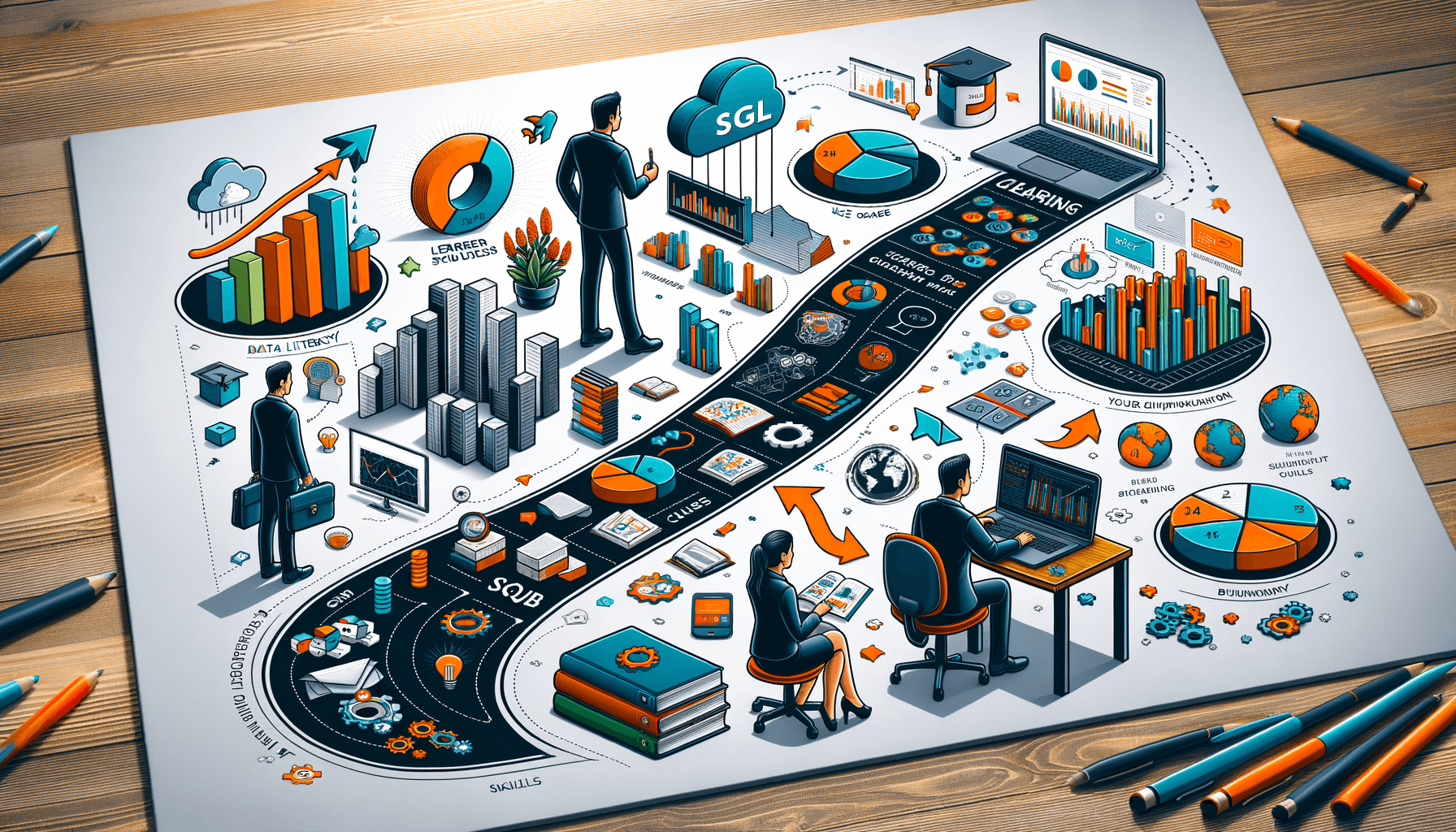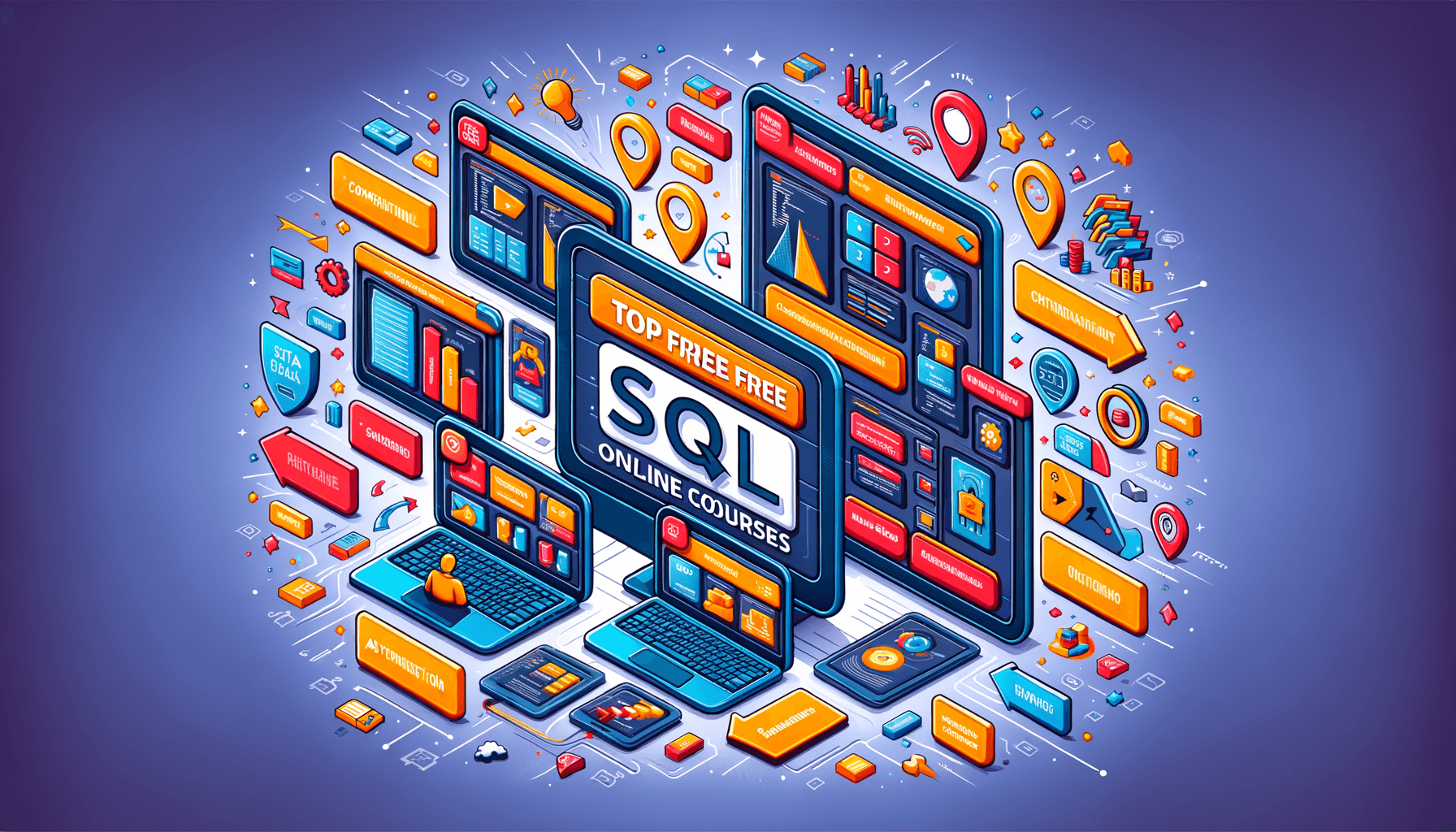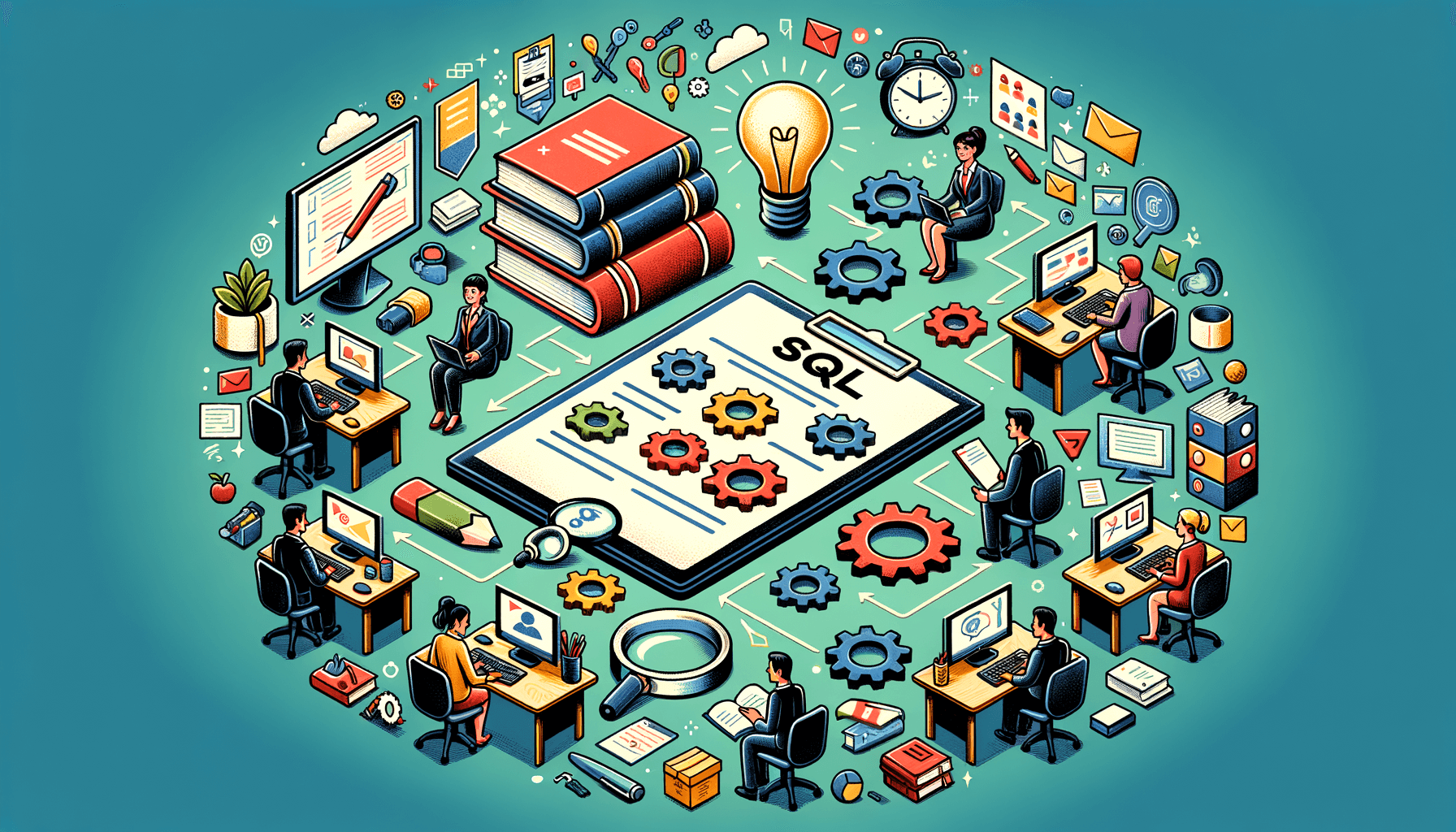A big variety of articles and resources

Is it worth learning SQL and Tableau?
 Sia Author and Instructor
Learn SQL
Sia Author and Instructor
Learn SQL
14 minute read
In today's world, knowing how to use data is super important. Businesses everywhere are looking for people who can understand and work with data. Two popular tools for this are SQL and Tableau. But is it worth learning them? This article will help you decide by exploring what these tools do, how they can be used together, and what jobs you can get if you know how to use them.
Key Takeaways
- Learning SQL and Tableau can open up many job opportunities.
- SQL helps you manage and analyze data, while Tableau helps you visualize it.
- Both tools are in high demand in various industries.
- Combining SQL and Tableau skills can give you a competitive edge.
- There are many ways to learn SQL and Tableau, including formal education and online courses.
The Importance of Data Literacy in Modern Business
Understanding Data-Driven Decision Making
In today's world, making decisions based on data is crucial. Companies rely on data to guide their choices, from marketing strategies to product development. This approach helps businesses stay ahead of the competition and make informed decisions.
The Role of Data in Competitive Advantage
Data gives companies an edge over their rivals. By analyzing data, businesses can spot trends, understand customer behavior, and improve their services. This advantage is essential for staying relevant in a fast-paced market.
The Growing Demand for Data Skills
As more companies recognize the value of data, the need for data skills is growing. Jobs that require data literacy are on the rise, and employees with these skills are in high demand. Learning data skills can open up many career opportunities and make you a valuable asset to any organization.
In the modern business landscape, data literacy is not just a nice-to-have skill; it's a must-have. Understanding how to work with data can set you apart and provide numerous opportunities for growth.
Overview of SQL: Structure and Functionality
Basic Concepts of SQL
Structured Query Language (SQL) is the backbone of database management. It allows us to interact with databases by performing tasks such as querying, updating, and managing data. SQL is essential for anyone working with databases because it provides a standardized way to communicate with them. We can use SQL to create tables, insert data, and retrieve information efficiently.
Advanced SQL Techniques
Once we master the basics, we can move on to advanced SQL techniques. These include complex joins, subqueries, and window functions. These techniques enable us to perform more sophisticated data analysis and manipulation. For example, window functions allow us to perform calculations across a set of table rows related to the current row, providing deeper insights into our data.
Common Use Cases for SQL
SQL is used in various applications across different industries. Some common use cases include:
- Data Analysis: Extracting and analyzing data to make informed decisions.
- Reporting: Generating reports to summarize business performance.
- Database Management: Maintaining and optimizing database systems.
Mastering SQL opens up numerous opportunities in data-driven fields, making it a valuable skill for modern professionals.
Introduction to Tableau: Features and Capabilities
Core Functions of Tableau
Tableau is a powerful tool for data visualization and business intelligence. It allows us to create interactive and shareable dashboards. These dashboards can present trends, variations, and density of data in a visually appealing way. One of the key features of Tableau is its ability to connect to various data sources, including spreadsheets, databases, and cloud services. This flexibility makes it a preferred choice for many businesses.
Visualization Techniques in Tableau
In Tableau, we can use a variety of visualization techniques to make data more understandable. From simple bar charts to complex heat maps, Tableau offers a wide range of options. We can also use filters and drill-down features to explore data in depth. This helps in identifying patterns and insights that might not be obvious at first glance. Enhancing data storytelling is one of the main benefits of using Tableau for visualizations.
Integration with Other Tools
Tableau integrates seamlessly with other tools and platforms, making it a versatile addition to our data analytics toolkit. Whether we are using SQL databases, cloud storage, or other BI tools, Tableau can connect and pull data effortlessly. This integration capability allows us to combine data from different sources, providing a more comprehensive view of our business metrics.
Tableau's ability to connect to various data sources and its wide range of visualization options make it an essential tool for modern businesses. Its integration capabilities further enhance its utility, allowing for a more holistic approach to data analysis.
Comparing SQL and Tableau: Complementary Tools
Data Extraction and Manipulation
When it comes to data extraction and manipulation, SQL is the go-to tool. It allows us to pull data from various databases and transform it as needed. On the other hand, Tableau excels in visualizing this data, making it easier to understand and analyze. Both tools together provide a powerful combination for handling and presenting data effectively.
Data Visualization and Reporting
Tableau is designed for creating stunning visualizations and detailed reports. It helps us turn raw data into meaningful insights. While SQL can also generate reports, it lacks the visual appeal that Tableau offers. By using both tools, we can create comprehensive reports that are both informative and visually engaging.
Use Cases for Combined SQL and Tableau Skills
Combining SQL and Tableau skills opens up a wide range of possibilities. For instance, we can use SQL to extract and clean data, then use Tableau to create interactive dashboards. This combination is particularly useful in business settings where data-driven decision-making is crucial. In fact, many companies prefer candidates who are proficient in both tools, as it allows for more efficient and effective data management.
Mastering both SQL and Tableau can significantly enhance our ability to work with data, making us more valuable in the job market. This is especially true when considering the competitive pricing and personalized learning options available on platforms like sqlskillz.com.
Career Opportunities for SQL and Tableau Experts
Job Roles and Responsibilities
In today's data-driven world, professionals skilled in SQL and Tableau are in high demand. These tools are essential for roles such as Data Analysts, Business Intelligence Developers, and Database Administrators. Mastering SQL and Tableau opens doors to various career paths where one can analyze data, create insightful reports, and support decision-making processes.
Industry Demand and Salary Trends
The demand for data professionals continues to grow across industries. Companies are willing to offer competitive salaries to attract top talent. Here's a quick look at the average salaries for some key roles:
| Job Role | Average Salary |
|---|---|
| Data Analyst | $65,000 |
| Business Intelligence Developer | $85,000 |
| Database Administrator | $75,000 |
Skills Development and Certification
To stay competitive, it's crucial to continuously develop your skills. Many professionals pursue certifications in SQL and Tableau to validate their expertise. Certifications not only enhance your resume but also demonstrate your commitment to the field. Consider enrolling in certification programs offered by recognized institutions to boost your career prospects.
Investing time in learning SQL and Tableau can significantly enhance your career opportunities and earning potential. These skills are not just valuable but essential in the modern job market.
Educational Pathways for Learning SQL and Tableau
Formal Education Programs
Formal education programs offer a structured way to learn SQL and Tableau. Many universities and colleges provide courses that cover the basics and advanced techniques. These programs often include hands-on projects, allowing students to gain practical SQL skills with real-world problems. The effort required for success in these programs is significant, but the rewards are worth it.
Online Courses and Tutorials
Online courses and tutorials are a flexible option for those who prefer to learn at their own pace. Platforms like Coursera, Udemy, and LinkedIn Learning offer a variety of courses, from beginner to advanced levels. These courses often feature expert-led training and hands-on projects, making it easier to understand complex concepts. Online learning can be a cost-effective way to gain new skills.
Self-Study Resources
For those who prefer a more independent approach, self-study resources are available. Books, blogs, and forums can provide valuable information and tips. Many professionals have successfully transitioned from zero to PostgreSQL Junior DBA by using these resources. The key is to stay motivated and consistent in your studies.
Learning SQL and Tableau can open up numerous career opportunities. Whether you choose formal education, online courses, or self-study, the important thing is to stay committed and keep practicing.
Practical Applications of SQL in Business
Database Management
In the world of business, managing databases is crucial. SQL helps us organize and handle large amounts of data efficiently. We can create, update, and delete records with ease. This makes it easier to keep track of important information.
Data Analysis and Reporting
SQL is a powerful tool for analyzing data. We can use it to find patterns and trends in our data. This helps us make better decisions. For example, a data analyst can use SQL to pull specific data from a database and create detailed reports. These reports can then be used to guide business strategies.
Automating Business Processes
One of the best things about SQL is that it can automate repetitive tasks. This saves us time and reduces the chance of errors. For instance, we can write SQL scripts to automatically update our inventory levels or generate monthly sales reports.
SQL is not just a tool; it's a game-changer in how we handle and understand data in business.
By using SQL, we can streamline our operations and focus on what really matters: growing our business.
Utilizing Tableau for Business Intelligence
Creating Interactive Dashboards
In today's fast-paced business world, having access to real-time data is crucial. Tableau allows us to create interactive dashboards that provide a comprehensive view of our data. These dashboards are not only visually appealing but also highly functional, enabling us to drill down into specific data points and gain deeper insights. Interactive dashboards can be customized to meet the unique needs of different departments, making it easier for everyone to understand and act on the data.
Real-Time Data Monitoring
With Tableau, we can monitor our data in real-time, which is essential for making timely decisions. This feature is particularly useful for tracking key performance indicators (KPIs) and other important metrics. By setting up real-time data feeds, we can ensure that our dashboards are always up-to-date, providing us with the most current information available. This capability is invaluable for businesses that need to respond quickly to changing conditions.
Enhancing Data Storytelling
Tableau excels at turning raw data into compelling stories. By using various visualization techniques, we can highlight trends, patterns, and outliers that might otherwise go unnoticed. This makes it easier to communicate complex information in a way that is both engaging and easy to understand. Data storytelling is a powerful tool for persuading stakeholders and driving informed decision-making.
The zero to MySQL Junior DBA course offers practical SQL training with real-world problem-solving, hands-on projects, and expert guidance for career advancement in data management.
Challenges and Considerations in Learning SQL and Tableau
Common Learning Obstacles
When we start learning SQL and Tableau, we often face several hurdles. One of the main challenges is understanding the syntax and structure of SQL queries. This can be especially tough for beginners who have no prior experience with coding. Additionally, mastering the various features and functions of Tableau can be overwhelming. It's crucial to practice regularly to overcome these initial obstacles.
Balancing Theory and Practice
In our journey to learn SQL and Tableau, we must strike a balance between theory and practice. While theoretical knowledge provides a foundation, practical application is what truly cements our understanding. We should engage in hands-on projects, such as creating a mini course on SQL query crafting, to apply what we've learned. This approach helps us retain information better and prepares us for real-world scenarios.
Keeping Up with Technological Advancements
The field of data analytics is constantly evolving, with new tools and techniques emerging regularly. Staying updated with these advancements is essential for maintaining our skills. We can do this by following industry blogs, participating in webinars, and joining professional communities. This continuous learning process ensures that we remain competitive in the ever-changing landscape of data analytics.
Learning SQL and Tableau is a journey that requires dedication and continuous effort. By overcoming common obstacles, balancing theory with practice, and staying updated with technological advancements, we can master these powerful tools and advance our careers in data-driven roles.
Future Trends in Data Analytics and Visualization
Emerging Technologies
In the world of data analytics, new technologies are always coming up. Artificial Intelligence (AI) and Machine Learning (ML) are becoming more important. They help us find patterns in data that we might miss. Quantum computing is also on the horizon, promising to make data processing faster than ever before.
Evolving Industry Standards
As data becomes more important, the rules and standards for handling it are changing. We need to follow new guidelines to keep data safe and private. These standards also help us make sure our data is accurate and reliable. This is important for making good decisions based on data.
The Future of Data-Driven Decision Making
Data is becoming a key part of how businesses make decisions. With better tools and more data, we can make smarter choices. This means we can be more competitive and successful. In the future, we will rely even more on data to guide our actions and strategies.
As we look ahead, it's clear that staying updated with the latest trends in data analytics and visualization is crucial for success. The field is always changing, and we must adapt to keep up.
The future of data analytics and visualization is bright and full of exciting possibilities. As technology advances, new tools and methods are emerging that make it easier to understand and use data. Whether you're a beginner or an expert, staying updated with these trends is crucial. Visit our website to explore our courses and learn how you can stay ahead in this ever-evolving field.
Conclusion
In summary, learning SQL and Tableau can be very useful. These tools help you understand and show data clearly. SQL lets you ask questions to your data and get answers fast. Tableau helps you make charts and graphs that are easy to understand. Together, they make a strong team for anyone who wants to work with data. Whether you are a student, a worker, or just curious, knowing SQL and Tableau can open many doors. So, if you have the chance to learn them, it is definitely worth it.
Frequently Asked Questions
What is SQL and why should I learn it?
SQL stands for Structured Query Language. It's used to manage and manipulate databases. Learning SQL helps you work with data efficiently, which is a valuable skill in many jobs.
What is Tableau used for?
Tableau is a tool for creating visual reports and dashboards. It helps you see data in a way that's easy to understand, making it great for business decisions.
Can I learn SQL and Tableau on my own?
Yes, you can learn both on your own. There are many online courses, tutorials, and resources that can help you get started.
Are SQL and Tableau used together?
Yes, many professionals use SQL to get data and Tableau to visualize it. They work well together to help you understand and use data better.
What kind of jobs can I get with SQL and Tableau skills?
With these skills, you can work in roles like data analyst, business analyst, and data scientist. These jobs are in high demand and often pay well.
Is it hard to learn SQL and Tableau?
Learning anything new can be challenging, but with practice and the right resources, you can learn SQL and Tableau. Start with the basics and gradually move to more advanced topics.
How long does it take to learn SQL and Tableau?
The time it takes to learn depends on how much time you can dedicate. Some people learn the basics in a few weeks, while others may take a few months to become comfortable.
Do I need a background in programming to learn SQL and Tableau?
No, you don't need a programming background. Both SQL and Tableau are designed to be user-friendly, and many beginners find them accessible.
Related Articles

Find the Best SQL Online Course for Free Today
9 minute read

How to get a job doing SQL?
12 minute read





